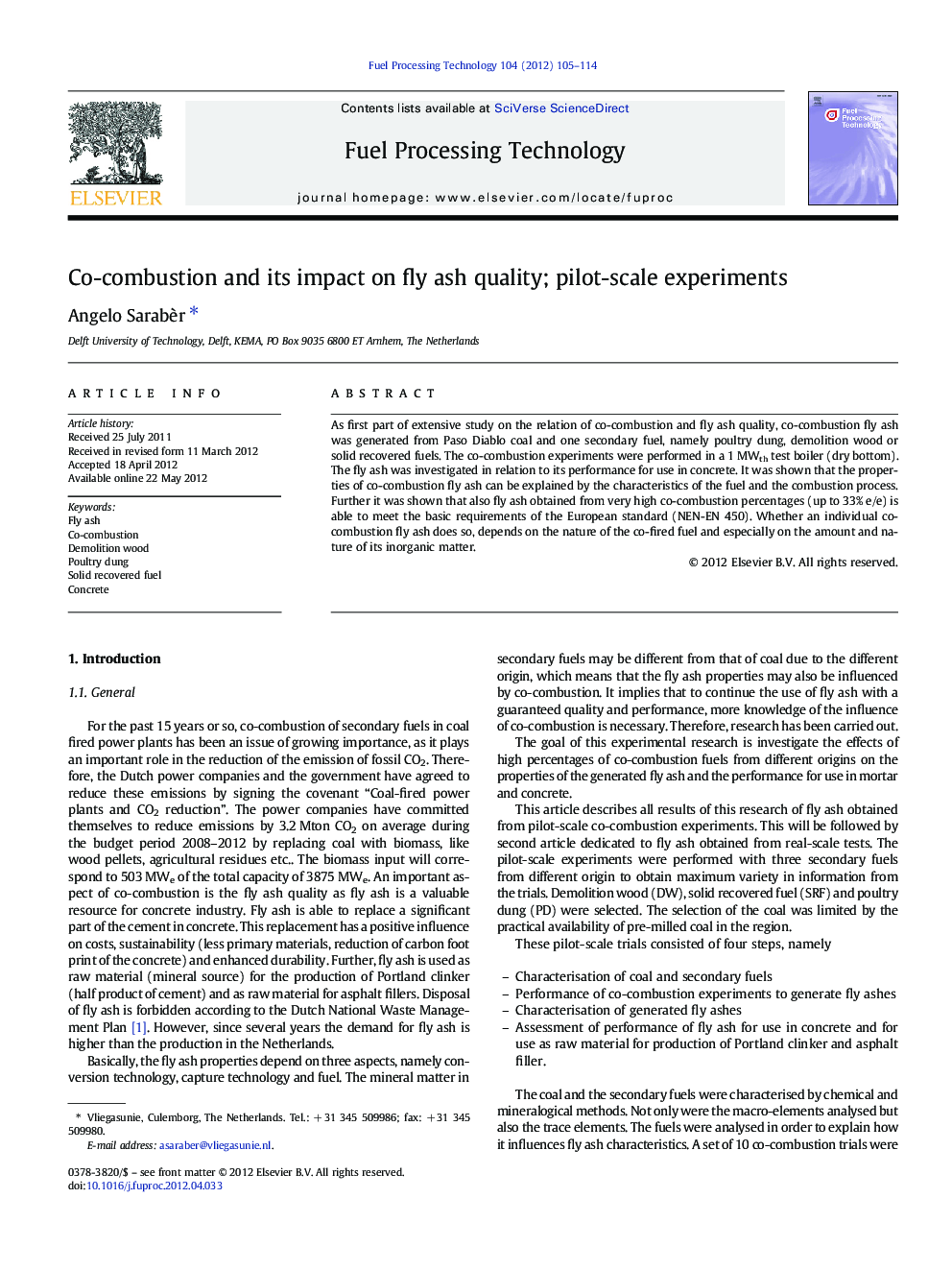| Article ID | Journal | Published Year | Pages | File Type |
|---|---|---|---|---|
| 210258 | Fuel Processing Technology | 2012 | 10 Pages |
As first part of extensive study on the relation of co-combustion and fly ash quality, co-combustion fly ash was generated from Paso Diablo coal and one secondary fuel, namely poultry dung, demolition wood or solid recovered fuels. The co-combustion experiments were performed in a 1 MWth test boiler (dry bottom). The fly ash was investigated in relation to its performance for use in concrete. It was shown that the properties of co-combustion fly ash can be explained by the characteristics of the fuel and the combustion process. Further it was shown that also fly ash obtained from very high co-combustion percentages (up to 33% e/e) is able to meet the basic requirements of the European standard (NEN-EN 450). Whether an individual co-combustion fly ash does so, depends on the nature of the co-fired fuel and especially on the amount and nature of its inorganic matter.
► Fly ash from high percentage of co-combustion is able to meet basic requirements for use in concrete. ► The behavior of this fly ash in concrete can be related to the mineralogy of the fly ash. ► The main influence for use in clinker production is the decrease of alumina in the generated fly ashes. ► Other influences are the increase of alkalis and heavy metals.
